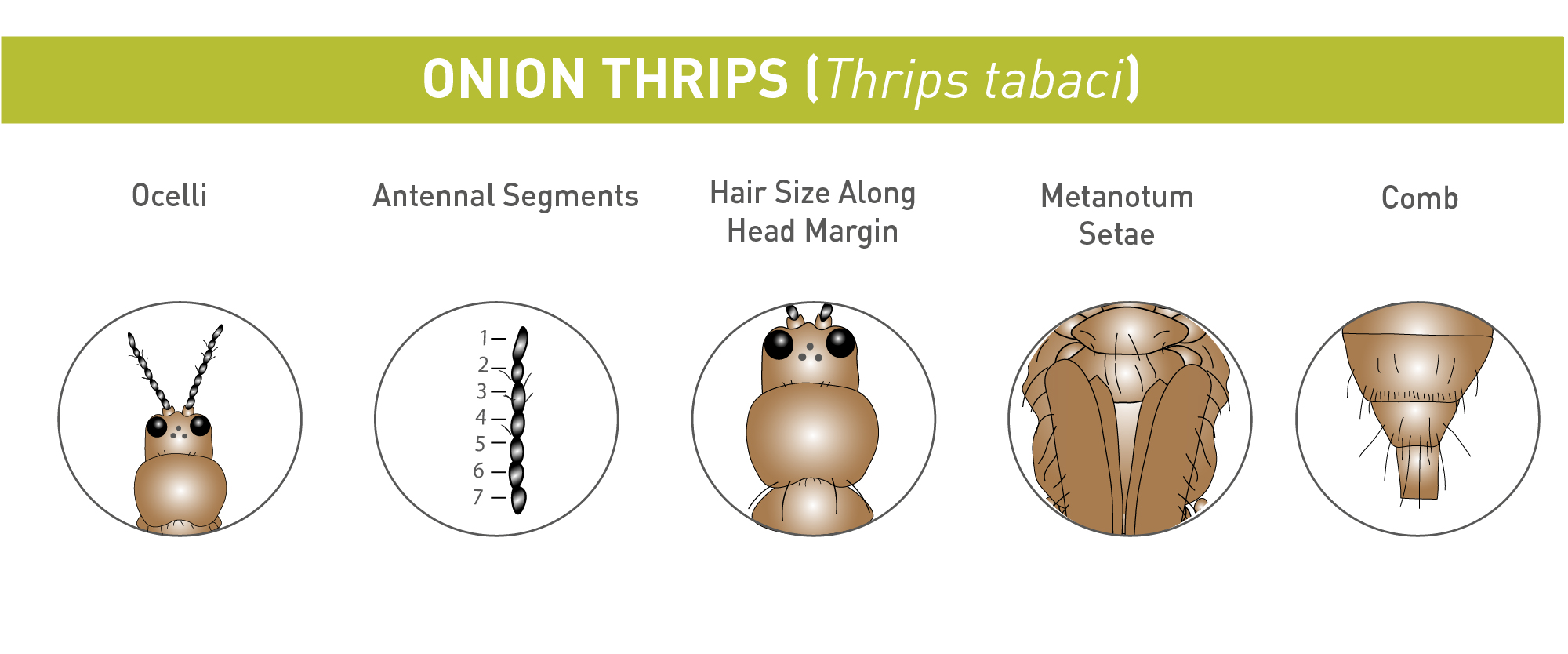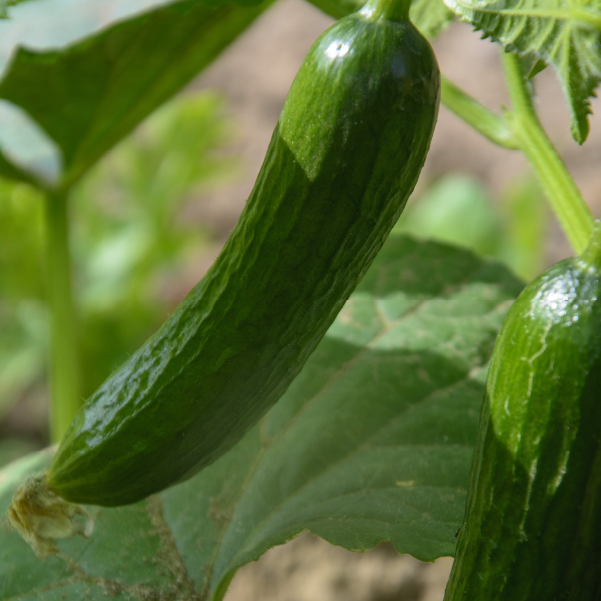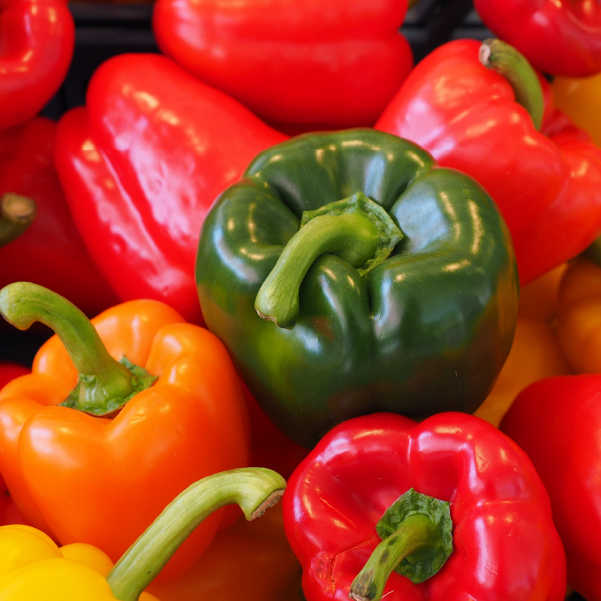Onion thrips (Thrips tabaci) is a worldwide pest with a wide range of host plants and is particularly damaging vegetables and ornamental plants. The onion thrips is a small insect with a narrow body; females are usually yellow, yellowish-brown or brown and the males are yellow, having seven segmented antennae. These thrips are winged (macropterous) and have an ovipositor at the tip of the abdomen. The larvae are white or yellowish and while the two first larval stages do feed, the prepupal and pupal stages are non-feeding. In some locations it breeds throughout the year yet in cooler climates it can overwinter in plant debris and become active again in spring.
Damage
The thrips cause direct and indirect damage to its host plants by scratching their tissues and sucking sap. The direct damage takes the form of chlorophyll content reduction and yellowing of foliage, accompanied sometimes by dehydration and defoliation. The damage to the flowers appears as light spots on the petals, necrosis, blackening of the margins of the petals and discoloration of the flowers. Various disease viruses, such as Iris yellow spot virus (IYSV) and Strawberry necrotic shock virus (SNSV), may penetrate via the feeding wounds. On the fruit, there are a number of typical damage signs: silvering in sweet pepper, bronzing in strawberry, scars and malformation in cucumber, and small perforations in tomato. In addition, there is a decrease in yield as a result of the falling off of fruit. The indirect damage is caused by the transfer of a harmful viral disease, Tomato Spotted Wilt Virus (TSWV).
There are specific natural enemies for different species of thrips.
For more information contact your local BioBee field agent.




















